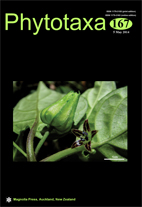Abstract
The genus Rubus Linnaeus (1753: 492) with nearly 700 species in Europe (Kurtto et al. 2010) constitutes an extraordinarily taxonomically critical group within the Rosaceae (Rosoideae). The richness of morphotypes combined with a poor understanding of the breeding system of apomictic brambles has resulted in the description of thousands of entities. Lack of taxonomic standards and an overwhelming number of scientific names has caused nomenclatorial chaos, which mainly has been resolved by the modern species concept developed in Europe in the late 1900s (“Weberian reform”, Weber 1999; Haveman & de Ronde 2012). However, the review of older names is an extended process and re-evaluation of names has often failed due to lack of type material.

